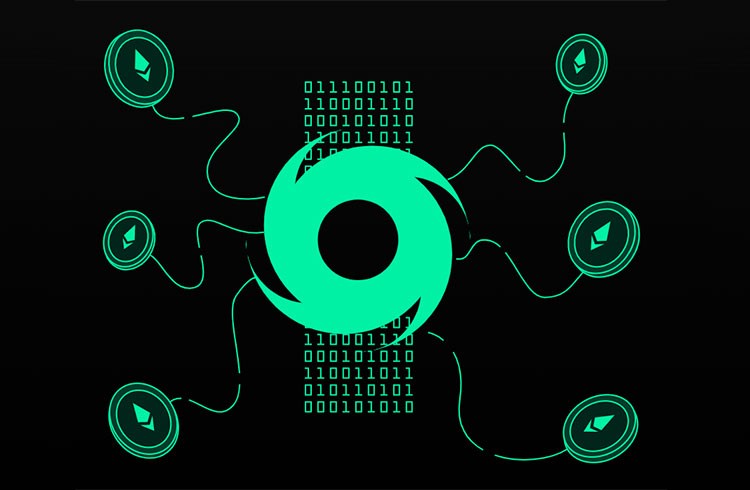Key Takeaways
- FOMO in crypto is a psychological trap that leads to poor investment decisions.
- Understanding market psychology helps traders build emotional discipline.
- Avoiding panic selling and euphoric buying is essential for long-term success.
- Practicing trading with demo accounts and proper education builds resilience.
- MEXC offers tools and a beginner-friendly platform to support strategic decisions.
Introduction: Why FOMO Is Dangerous in Crypto Trading
Cryptocurrency markets are known for their extreme volatility, fast gains, and equally steep losses. This environment often triggers FOMO (Fear of Missing Out) — a psychological reaction that leads traders to make irrational decisions. Whether it’s rushing to buy a coin that’s already surged or panic-selling during a dip, FOMO is one of the most common reasons investors lose money in crypto.

This article explores how to recognize FOMO, how to resist it, and how to improve your emotional intelligence and trading strategies for long-term success in crypto. We also introduce MEXC, one of the most beginner-friendly platforms for learning and practicing safe crypto investing.
Understanding the Psychology of Market Cycles
Every financial market operates in cycles, and crypto is no exception. These cycles are driven largely by investor psychology, including phases like optimism, euphoria, denial, fear, and panic.
Common Phases of the Market Psychology Cycle:
- Hope & Optimism: Early adopters invest.
- Euphoria: Retail investors enter in mass; prices spike.
- Anxiety & Denial: Market slows; people hold onto hope.
- Panic & Capitulation: Investors sell at a loss.
- Depression & Disbelief: Market bottoms before restarting.
Traders who fail to understand these phases are more likely to buy at the top and sell at the bottom — the exact opposite of a sound investment strategy. Recognizing these phases helps you detach emotionally and trade rationally.
Avoiding FOMO and Panic Selling: Common Mistakes
FOMO often leads to a range of emotional trading mistakes that can significantly damage a trader’s portfolio, especially in the volatile world of cryptocurrency. When traders are driven by the fear of missing out, they tend to act impulsively, abandoning their strategies in favor of emotional decisions. This typically results in buying assets at inflated prices during hype cycles or selling prematurely during temporary corrections out of fear of further losses. Such behavior is not only counterproductive but also exposes investors to unnecessary risks. Emotional trading rooted in FOMO clouds judgment, disrupts discipline, and often leads to overtrading, high fees, and significant capital losses.
Understanding these common FOMO-driven mistakes is essential for building a resilient mindset. Traders must learn to recognize the emotional triggers—like sudden market rallies, influencer hype, or social media buzz—that tempt them into reactionary decisions. By identifying these psychological pitfalls early and implementing structured trading plans, clear risk management strategies, and ongoing education, traders can maintain control and make informed decisions instead of emotional ones. In the following sections, we will break down the most common FOMO-related errors and provide actionable tips on how to avoid them, ensuring a more rational and sustainable approach to crypto investing.
A. Buying After a Parabolic Pump
When a cryptocurrency experiences a dramatic price surge—say 100% or more in just 24 hours—it often becomes the center of attention on platforms like Twitter, Reddit, Telegram, and YouTube. Influencers, media outlets, and retail traders amplify the hype, creating a powerful narrative that the coin is “going to the moon.” This surge in visibility triggers a classic FOMO reaction, especially among inexperienced traders who fear missing out on massive gains. As a result, many jump in and buy at or near the top of the market cycle without conducting proper research or considering the coin’s fundamentals.
This behavior is not only risky but often financially damaging. After the hype reaches a fever pitch, early investors and whales begin to take profits, causing the price to plummet. Those who bought during the peak end up holding depreciating assets, sometimes referred to as “bag holders.” This pattern—known as a pump-and-dump—has repeated itself countless times in the crypto market.
To avoid this trap, traders should remain cautious of sudden price spikes fueled by social sentiment. It’s crucial to wait for price stabilization, review technical indicators like RSI (Relative Strength Index), and assess whether the asset still has growth potential based on market context—not social media hype.
Resist this by:
- Waiting for pullbacks.
- Using technical indicators like RSI to avoid overbought conditions.
- Studying the project’s fundamentals, not just hype.
B. Selling During Market Dips (Panic Selling)
Waking up to see your cryptocurrency investment down 30% or more overnight can be deeply unsettling—especially for new investors. These sudden drops often trigger emotional reactions, with fear and anxiety clouding judgment. In a rush to avoid further losses, many traders make the critical mistake of panic selling, converting what could have been a temporary, “paper” loss into a permanent financial hit.
Market volatility is a well-known characteristic of cryptocurrencies. It’s not uncommon for assets like Bitcoin, Ethereum, or smaller altcoins to experience significant short-term dips before rebounding. For example, during the 2020 and 2022 corrections, Bitcoin lost over 40% in value but later recovered and reached new all-time highs. Those who sold in a panic during the downturn missed out on substantial long-term gains.
Resist this by:
- Understanding that crypto volatility is normal.
- Zooming out on charts to view long-term trends.
- Setting stop-losses and take-profit targets in advance.
C. Jumping from Coin to Coin
Switching between trending coins without a plan is another FOMO-driven behavior. This often leads to overtrading and higher transaction fees, reducing profits.
Resist this by:
- Building a long-term strategy.
- Limiting the number of trades per week.
- Keeping a trading journal to reflect on past mistakes.
Learn Before You Trade: The Importance of Education
Jumping into crypto trading without fundamental knowledge is like sailing without a compass—you may be moving, but you have no idea where you’re headed. Many beginners enter the market lured by success stories or price hype without understanding essential concepts like blockchain technology, market volatility, trading pairs, liquidity, or risk management.
This lack of foundational knowledge often leads to poor decision-making, such as investing in scam tokens, falling for pump-and-dump schemes, or misunderstanding how exchanges and wallets work. For example, a trader unaware of slippage may receive a significantly worse execution price during high volatility. Similarly, not knowing the difference between spot trading and margin trading can lead to unexpected liquidations and heavy losses.
To avoid these pitfalls, it’s crucial to educate yourself through trusted resources, such as the MEXC Learn platform, YouTube tutorials from verified channels, and beginner-focused crypto courses. Understanding how market cycles, tokenomics, blockchain consensus mechanisms, and regulatory news affect prices will give you a significant edge in decision-making.
Crypto is not a get-rich-quick scheme—it’s a high-risk, high-reward environment. Knowledge is your most valuable investment, especially in a market that operates 24/7 and evolves rapidly.
What Every Beginner Must Learn:
- How to read candlestick charts
- The difference between spot and futures trading
- Market orders vs. limit orders
- The use of technical indicators (MACD, RSI, Bollinger Bands)
- Risk management principles (e.g., never risk more than 1–2% per trade)
Practice With Demo Accounts
Many platforms, including MEXC, offer demo trading or simulation features where you can test your strategies without risking real money. This is crucial for mastering skills without emotional pressure.
Fees Matter: Don’t Ignore Them
Many traders focus only on price movements and forget about trading fees, which can erode profits, especially with frequent trades.
Types of Fees:
- Trading Fees: Maker and taker fees on each transaction.
- Withdrawal Fees: Vary by coin and network.
- Funding Rates: For perpetual contracts in futures trading.
How to Reduce Fees:
- Use fee discount tokens (e.g., MX on MEXC).
- Avoid excessive trading.
- Choose platforms with competitive fee structures.
Example: A beginner who makes 50 trades/month and pays $1 per trade loses $600/year in fees — money that could’ve been saved with better planning.
Focus on Long-Term Goals, Not Quick Gains
Crypto is often marketed as a way to get rich quickly. But history shows that long-term holders (HODLers) of quality assets like Bitcoin and Ethereum have outperformed short-term traders.
Consider This:
- Bitcoin’s average annual return since 2011 is ~200% — but only for those who held through crashes.
- Day trading requires constant monitoring, deep knowledge, and emotional detachment.
Tip: Align your trading goals with your risk tolerance. If you’re risk-averse, consider dollar-cost averaging (DCA) into major coins and holding.
Protect Your Crypto: Avoid Online Wallet Risks
Another common mistake beginners make is keeping their cryptocurrencies in online wallets—also known as hot wallets—for extended periods. While hot wallets (such as those provided by exchanges or browser-based wallet extensions like MetaMask or Trust Wallet) are convenient for quick trades and access, they are not designed for long-term storage due to their constant connection to the internet.
Hot wallets are more susceptible to hacking, phishing attacks, malware, and other forms of cybercrime. For example, in high-profile exchange breaches like the Mt. Gox hack (2014) and the KuCoin breach (2020), hackers stole hundreds of millions of dollars in user funds stored in hot wallets. These incidents underscore a vital lesson: accessibility comes at the cost of security.
For long-term holders or “HODLers,” the safest option is to move assets to cold wallets—hardware wallets like Ledger or Trezor that store your private keys offline. Cold storage drastically reduces the risk of unauthorized access since the wallets aren’t exposed to the internet.
If you must use a hot wallet for daily transactions, apply best security practices: enable two-factor authentication (2FA), use unique passwords, avoid public Wi-Fi, and regularly monitor wallet activity. Still, for long-term investment security, cold wallets are a must.
Risks of Online Wallets:
- Hacks: Centralized exchanges are prime targets.
- Phishing: Fake links can drain your funds.
- Loss of access: If a platform shuts down, you may lose your assets.
Best Practices:
- Use cold wallets (hardware wallets like Ledger or Trezor) for long-term storage.
- Enable 2FA (two-factor authentication) on all exchange accounts.
- Keep backup copies of private keys and seed phrases offline.
Choose the Right Platform: Why MEXC Is Ideal for Beginners
MEXC is one of the fastest-growing crypto exchanges globally, offering a user-friendly interface, low fees, and extensive educational resources.
MEXC Advantages:
- Low fees and deep liquidity for spot and futures trading.
- Educational Hub: Courses, articles, and trading tutorials for beginners.
- Demo trading environment for practicing.
- Strong community support in multiple languages.
- Supports DCA tools and limit orders to reduce FOMO-based decisions.
MEXC has been recognized for its safety, innovation, and dedication to customer support — all critical for those just entering crypto.
Conclusion: Build Discipline, Not Regret
The crypto market offers immense opportunities — but only for those who approach it with knowledge, strategy, and emotional control. FOMO is a real and powerful force, but it can be defeated by building awareness, educating yourself, managing risk, and choosing the right platform like MEXC.
Don’t trade based on emotion. Trade based on strategy.
Join MEXC and Get up to $10,000 Bonus!
Sign Up


